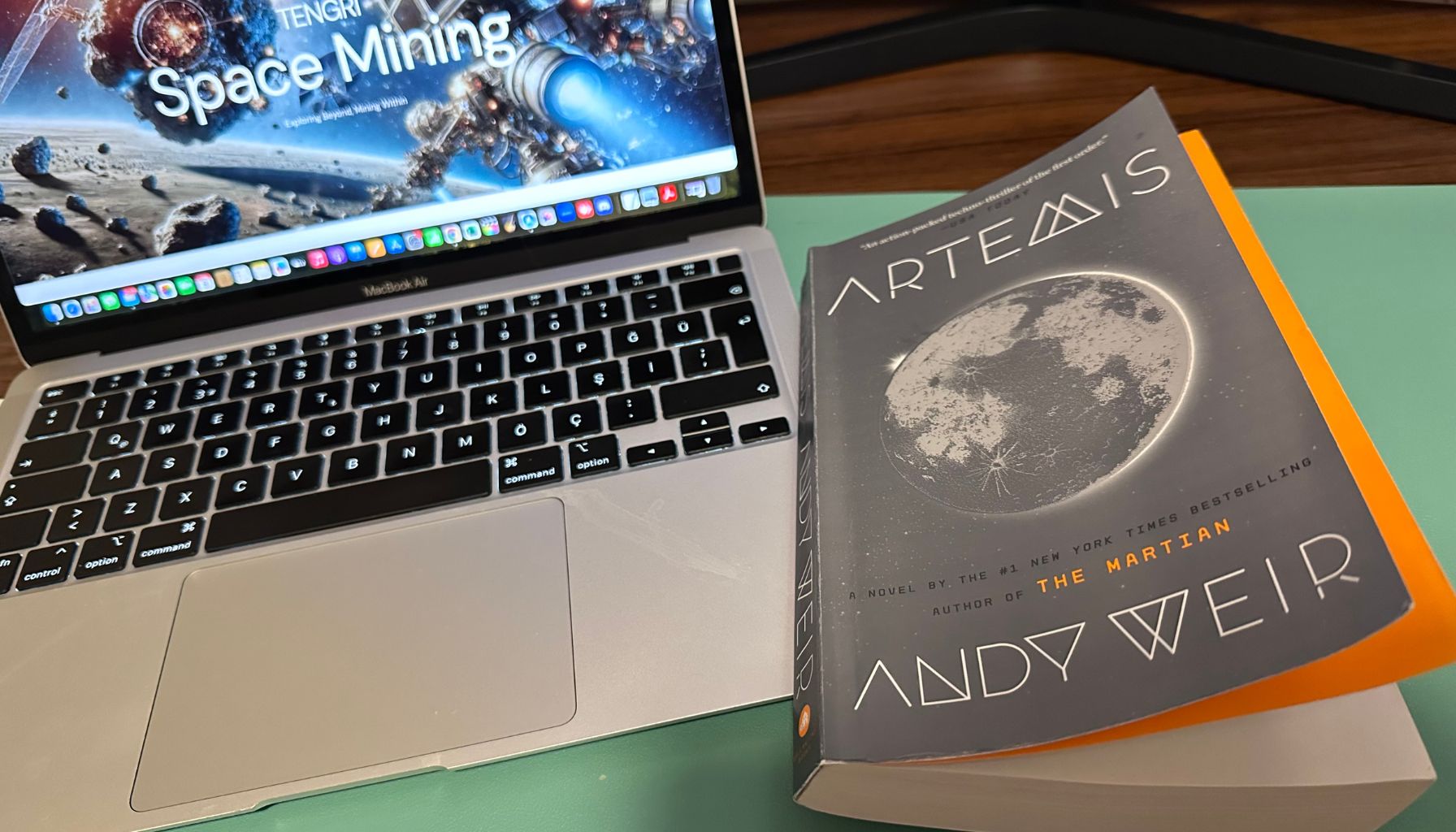Space Mining in Artemis by Andy Weir

Andy Weir’s novel Artemis, published in 2017, offers a thrilling and scientifically grounded vision of life on the Moon. Set in the near future, the story follows Jasmine “Jazz” Bashara, a porter and small-time smuggler living in Artemis, the first and only lunar city. While the book covers various aspects of lunar colonization, its depiction of space mining is particularly compelling. This review focuses on how Weir presents space mining in Artemis, analyzing its realism, economic implications, and role within the narrative.
Realistic Depiction of Space Mining
Weir is known for his meticulous attention to scientific detail, and Artemis is no exception. The novel describes the process of mining lunar resources with a level of accuracy and plausibility that appeals to science fiction enthusiasts and professionals alike.
- Extraction of Lunar Resources: In Artemis, the primary resource being mined is aluminum oxide, which is abundant on the Moon. The novel details the extraction process, which involves using automated machinery to collect lunar regolith and processing it to extract aluminum and oxygen. This depiction is grounded in real scientific principles, as aluminum oxide is indeed a common mineral on the Moon, and extracting oxygen from it is a feasible method for supporting human life and operations in a lunar environment.
- Automation and Robotics: The mining operations in Artemis are heavily automated, with robots performing the majority of the labor. This aligns with current advancements in robotics and artificial intelligence, which are expected to play crucial roles in future space mining endeavors. By reducing the need for human labor, automated systems can increase efficiency and safety, making lunar mining more viable.
- Economic Viability: Weir addresses the economic challenges of space mining, emphasizing the high costs and the need for substantial initial investment. The novel explores how the profitability of lunar mining is linked to the ability to produce and export valuable materials, such as aluminum and oxygen, which are essential for sustaining life and infrastructure on the Moon and potentially for space missions beyond.
Economic Implications
Artemis delves into the economic framework of a lunar city, providing insights into how space mining could drive the economy of an extraterrestrial settlement.
- Resource-Based Economy: The economy of Artemis relies heavily on the mining and export of lunar resources. This mirrors real-world discussions on how space mining could stimulate economic growth by providing a steady supply of essential materials for space infrastructure and industry.
- Market Dynamics: The novel illustrates the competitive nature of the space mining industry, with various companies vying for contracts and market share. This competition drives innovation and efficiency, highlighting the potential for a vibrant market economy in space.
- Job Creation and Economic Opportunities: Weir’s depiction of Artemis includes a range of jobs and economic opportunities created by the mining industry, from engineers and technicians to porters and smugglers. This diversity reflects the broader economic impact that space mining could have, fostering new industries and employment opportunities.
Role Within the Narrative
Space mining is not just a backdrop in Artemis but plays a central role in the plot and character development.
- Plot Catalyst: The story’s conflict revolves around a conspiracy to control the lucrative lunar mining operations. Jazz becomes entangled in a plot to sabotage a competitor’s equipment, setting off a chain of events that drive the narrative forward. This use of space mining as a plot device underscores its significance within the world of Artemis.
- Character Motivation: Jazz’s motivations are closely tied to the economic opportunities presented by the mining industry. Her desire to improve her financial situation and escape her current life leads her to take risks and engage in dangerous schemes. This personal connection to the mining industry adds depth to her character and makes her actions more relatable.
- Societal Impact: The novel explores the broader societal impact of space mining on Artemis, including issues of inequality, corporate dominance, and environmental concerns. These themes are woven into the fabric of the story, providing a nuanced perspective on the potential consequences of space mining.
Andy Weir‘s Artemis offers a compelling and scientifically plausible depiction of space mining, highlighting its potential economic benefits and challenges. The novel’s detailed portrayal of mining operations, economic framework, and societal impact provides a thought-provoking exploration of what the future of space mining could look like. By integrating these elements into a gripping narrative, Weir not only entertains but also educates readers about the possibilities and complexities of mining the Moon and other celestial bodies.